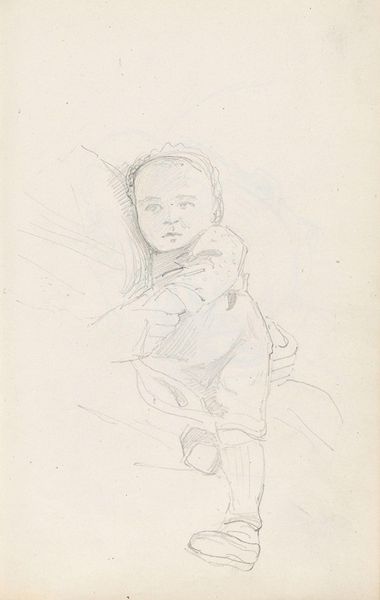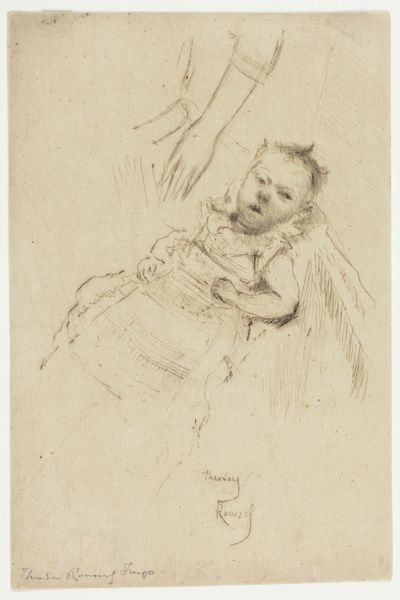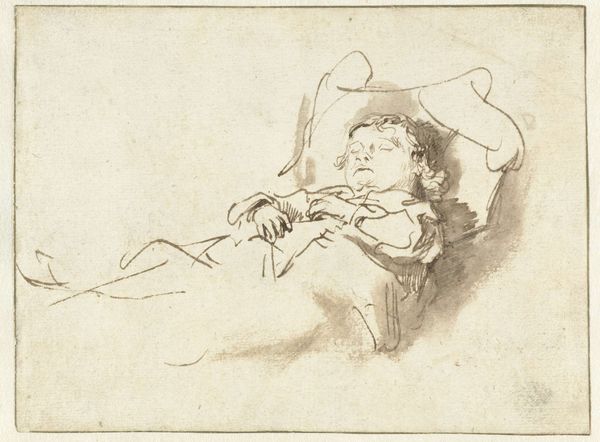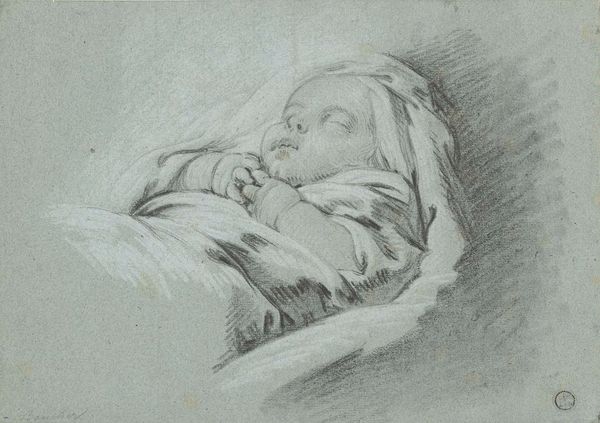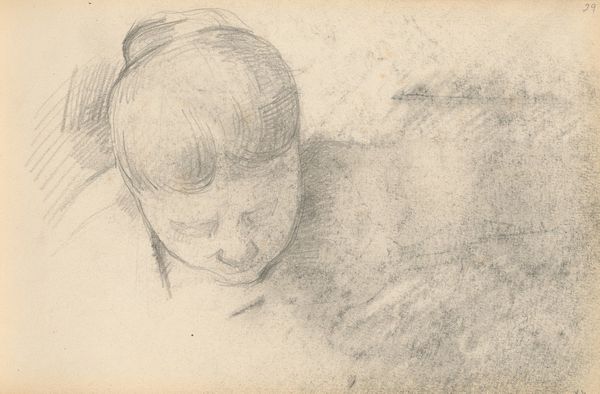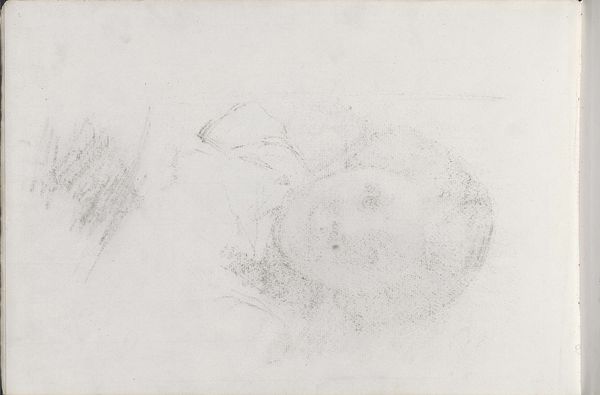
#
amateur sketch
#
light pencil work
#
pencil sketch
#
incomplete sketchy
#
organic drawing style
#
ink drawing experimentation
#
pen-ink sketch
#
botanical drawing
#
pencil work
#
initial sketch
Dimensions: height 171 mm, width 232 mm
Copyright: Rijks Museum: Open Domain
Pieter Bartholomeusz Barbiers created this sensitive drawing of a sleeping child with graphite. Though undated, it likely originates from the late 18th or early 19th century in the Netherlands. During this period, the Dutch art world experienced shifts, influenced by Enlightenment ideals and a growing middle class. While the Dutch Republic had a rich tradition of genre painting and portraiture, there was a developing interest in more sentimental and domestic subjects. The child, a symbol of innocence and vulnerability, became a popular theme, reflecting changing social attitudes toward family life and childhood. Barbiers, as an artist working within this context, contributed to the growing market for intimate and personal works. A closer look into the archives of Dutch art academies and exhibition records would provide valuable insights into the artist's training, influences, and the reception of his work. It reveals how societal values shaped the themes and styles that artists like Barbiers chose to explore.
Comments
No comments
Be the first to comment and join the conversation on the ultimate creative platform.

